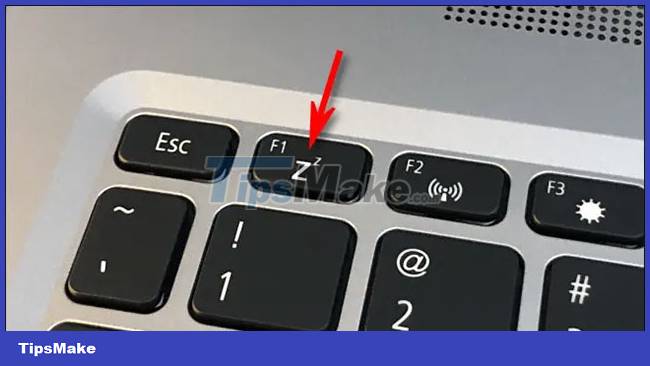Here are the 3 fastest ways to put your computer to sleep
In general, there are many ways for you to put your Windows 10 or 11 PC to sleep, but this article will guide you through the 3 simplest methods.
3 fastest ways to put Windows computer to sleep
Use a dedicated key or button
You may not have noticed, but all modern laptops and tablets running Windows today have a dedicated button that, when clicked, will immediately put the system to sleep. Also on some models of removable keyboards, this physical 'Sleep' button may also be built-in.

To find this button, you can consult your device's user manual, or simply look closely to see if any buttons are printed with the crescent moon logo, the word 'sleep', or simply simply a few small 'Z's. Tap it and your PC will quickly go to sleep.
To wake up the system, simply press the power button, click on the trackpad, or press any key on the keyboard.
Use keyboard shortcuts
If your PC or keyboard doesn't have a dedicated Sleep button, you can use a set of keyboard shortcuts to put your PC to sleep in the blink of an eye.

To do so, first press Windows + X on your keyboard (this will open the Power User menu). Then press 'U' then press 'S'. Your PC will immediately go to sleep. In general, you just need to remember this order: Win + X -> U -> S.
Close the screen
If you're using a notebook or laptop, you can usually put your computer to sleep quickly by folding it. Normally, when you fold the screen down to the closed position, your laptop automatically goes to sleep. If that doesn't happen, you can check the current system setup again.

Wish you always have the best experience.
 The first information about Windows 11 23H2 (Sun Valley 3) appeared
The first information about Windows 11 23H2 (Sun Valley 3) appeared How to open Powershell with administrative privileges from CMD
How to open Powershell with administrative privileges from CMD How to Enable USB Booting on a Chromebook
How to Enable USB Booting on a Chromebook How to view and change the refresh rate of the Windows screen
How to view and change the refresh rate of the Windows screen TPM firmware error causes AMD computers running Windows 11, 10 to hang and a temporary fix
TPM firmware error causes AMD computers running Windows 11, 10 to hang and a temporary fix How to disable the Fast Startup feature on Windows
How to disable the Fast Startup feature on Windows